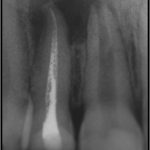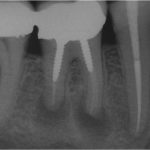Endodontics is the branch of dentistry that has as its objective of study the tissues located inside of the tooth (dental pulp or nerve) and the treatment of the diseases related to them.
Endodontic treatment is commonly associated, although inappropriately, with the term “tooth killing”. It is a dental surgery that has as its main purpose the protection of the tooth and it tries to avoid as much as possible turning to extraction and implantology.
Performing correct endodontic treatment, using cutting-edge materials and toolkits (an operating microscope, tools made of special alloys, innovative biomaterials, etc.), is of paramount importance for the teeth to continue to carry out the normal masticatory function without presenting in the future any complications such as acute abscesses or granulomas.
The patient must, therefore, be aware that endodontic treatment is far from being an ordinary medical solution that is easy to perform, as this is often perceived from the result of a widespread lack of understanding and a very vague approach expressed by some operators. This can even result in the patient having misconceptions about the costs of endodontic treatment, given that often it is believed to be inexpensive, especially compared to implants that have, sometimes unjustifiably, very high prices.
In recent years there has in fact been a strong and objectionable increase in dental replacements with implants, a clear signal that the approach to quality endodontics is unfortunately still not widespread.






























